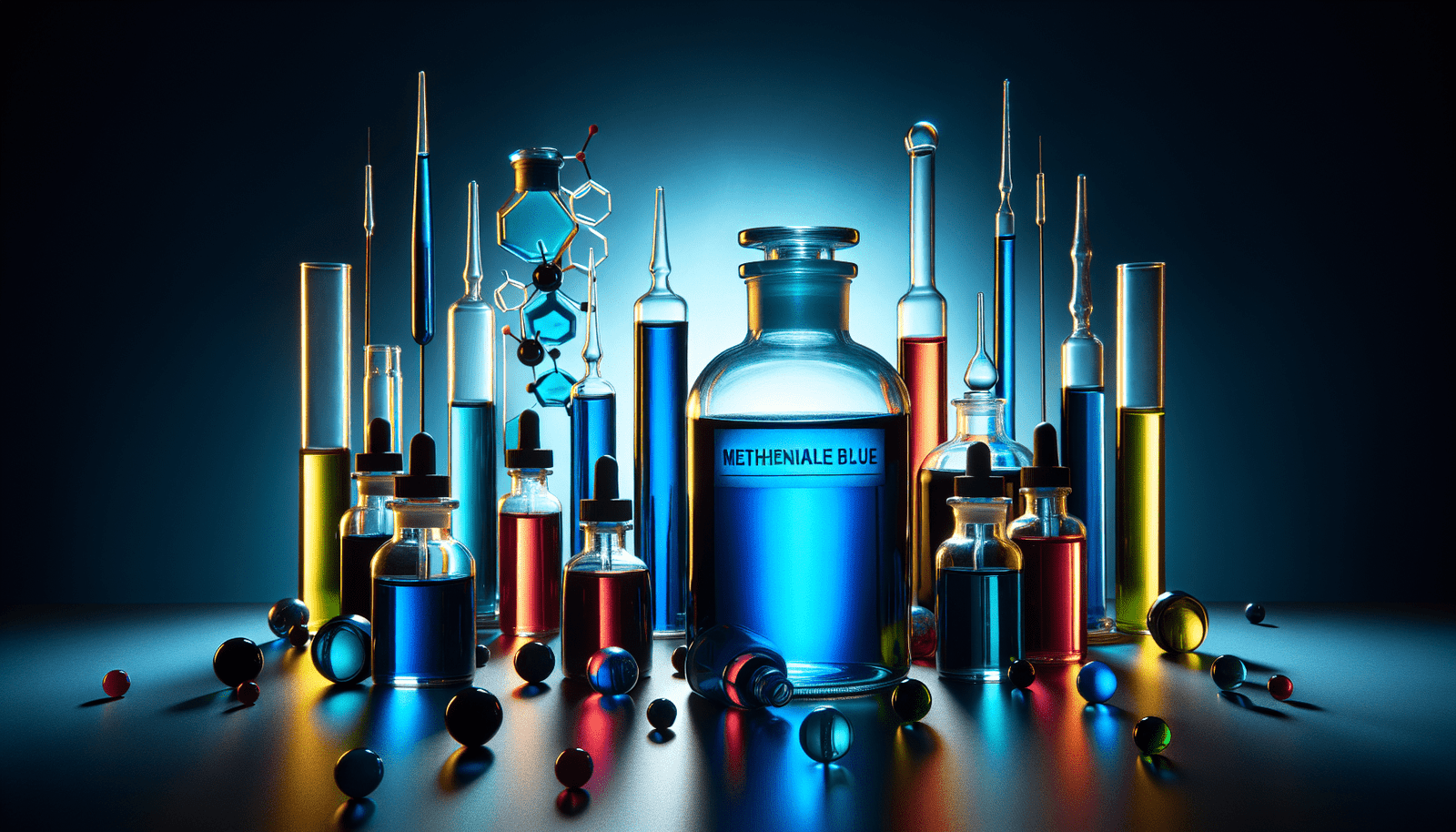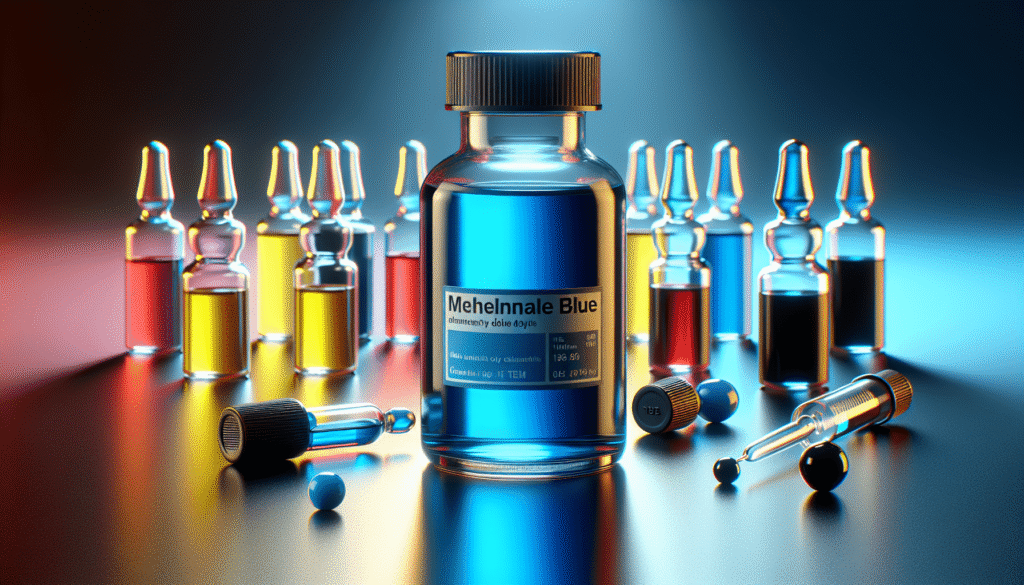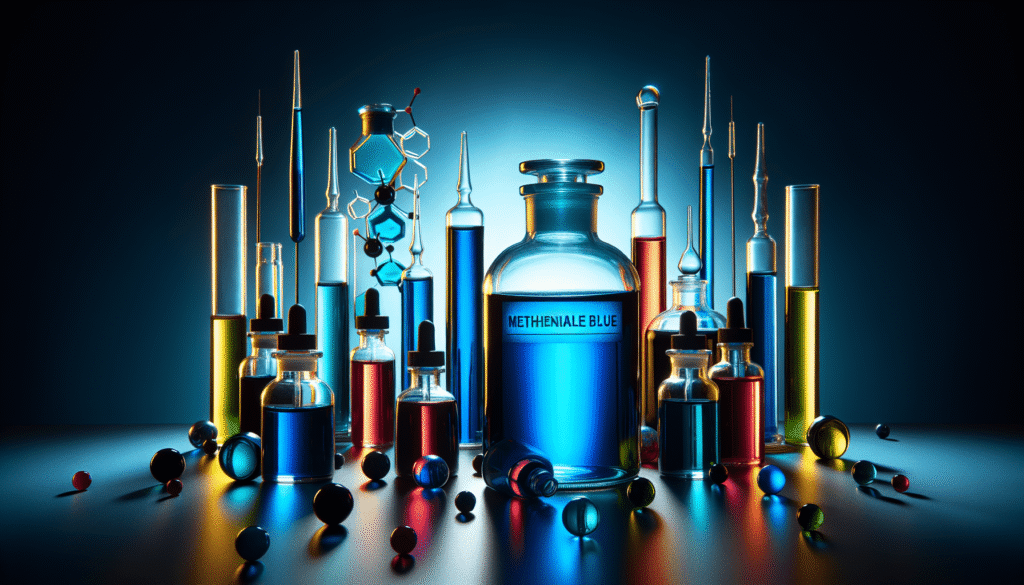
What distinguishes Methylene Blue from other dyes in the vast array of chemical compounds? Understanding the unique properties and applications of different dyes can illuminate not only their cultural significance but also their practical uses in various fields including medicine, biology, and art. Methylene Blue, in particular, holds a critical position due to its specific characteristics and applications.

The Nature of Dyes
In a general sense, dyes are colored substances that are used to impart color to materials such as textiles, food, and biological specimens. They can be broadly categorized into natural and synthetic dyes, each with its own advantages and limitations. The ability to lend color is just one facet of these complex compounds; they also interact with light in various ways.
Natural Dyes
Natural dyes are derived from plants, animals, and minerals. They have been used for centuries and are often considered more environmentally friendly than their synthetic counterparts. Natural dyes can produce a range of colors, but they may not be as vibrant or lightfast.
Synthetic Dyes
In contrast, synthetic dyes are chemically manufactured and can produce a wide array of brilliant colors. They have superior colorfastness, meaning they resist fading when exposed to light and washing. However, the environmental impact and potential toxicity of certain synthetic dyes raise concerns.
Comparing Methylene Blue to Other Synthetic Dyes
Among the synthetic dyes, Methylene Blue is particularly noteworthy. It was first synthesized in the 19th century and has since found diverse applications. To understand Methylene Blue’s unique features, let’s compare its properties with some other common synthetic dyes.
| Property | Methylene Blue | Crystal Violet | Safranin | Eosin |
|---|---|---|---|---|
| Chemical Formula | C16H18ClN3S | C25H30Cl | C14H14ClN3 | C20H8Br4Na2O5S |
| Primary Use | Staining, Antiseptic | Staining, Antiseptic | Staining | Histology, Staining |
| Color | Dark Blue | Purple | Red | Pink |
| Lightfastness | Moderate | High | Moderate | High |
| Toxicity Level | Low | Moderate | Moderate | High |
This table serves to illustrate the distinctions in chemical composition, applications, and characteristics between Methylene Blue and other dyes. Understanding these differences is crucial in selecting the appropriate dye for specific purposes.
Historical Context of Methylene Blue
Methylene Blue has garnered attention for its historical significance in various fields. Initially developed as a dye for textiles during the mid-19th century, it soon became apparent that its properties extended beyond mere coloration.
Medical Applications
Methylene Blue is widely recognized for its medicinal applications. Its introduction into the medical field can be traced back to its use as a treatment for malaria. Over the years, its role has expanded to include:
- Antiseptic Properties: Methylene Blue can be used to treat urinary tract infections and other bacterial infections.
- Methemoglobinemia Treatment: It helps restore normal hemoglobin levels by converting methemoglobin back to hemoglobin.
- Cognitive Enhancement: Recent research suggests potential benefits in neurodegenerative conditions such as Alzheimer’s disease.
Biological Applications
In biology, Methylene Blue is a critical component in staining techniques. It is employed in various microscopy methods to visualize and differentiate cells and cellular components. Some applications include:
- Staining Bacterial Cells: It enables scientists to observe the morphology of bacteria.
- Histological Studies: Used to stain tissue samples for examinations under a microscope.
Methylene Blue’s Unique Properties
What sets Methylene Blue apart from other dyes are its distinct chemical properties. Understanding these characteristics can clarify why it is favored in specific applications.
Solubility
Methylene Blue is soluble in water, making it convenient for use in laboratory settings. It readily dissolves in a variety of solvents and can be used in solutions of varying concentrations.
Color and Absorbance
The intense blue color of Methylene Blue stems from its chemical structure, which allows it to absorb light in the red spectrum. It demonstrates high absorbance at a wavelength of 664 nm, making it particularly effective for applications requiring light absorption.
Stability
While many dyes can degrade or change color when exposed to light or heat, Methylene Blue is relatively stable under a variety of conditions. However, like all synthetic dyes, it is not entirely immune to photodegradation, particularly with prolonged exposure.
Methylene Blue in Comparison to Specific Dyes
Methylene Blue vs. Crystal Violet
Both Methylene Blue and Crystal Violet are popular in biological staining. However, they differ significantly in their chemical structure and applications.
- Chemical Structure: Crystal Violet has a more complex structure than Methylene Blue, contributing to its different staining capabilities.
- Application Differences: While Methylene Blue is often used for bacterial staining and assessing cell viability, Crystal Violet is favored for its effectiveness in staining fungal cells and as a histological probe.
Methylene Blue vs. Safranin
Safranin is another dye commonly used in microbiology, particularly in coin staining procedures such as Gram staining. Let’s explore their differences.
- Color Intensity: Safranin delivers a red stain, which can make it easier to visualize specific features that Methylene Blue might obscure.
- Use in Techniques: Safranin is often used in conjunction with Methylene Blue in Gram staining protocols to differentiate between Gram-positive and Gram-negative bacteria.
Methylene Blue vs. Eosin
Eosin is another dye that often finds common use in histology, especially in conjunction with Methylene Blue in staining protocols.
- Staining Mechanism: Eosin is an acidic dye that binds to basic components in the cells, providing complementary color characteristics when used with Methylene Blue, which tends to stain acidic components.
- Visual Results: Together, they offer a remarkable contrast that helps highlight the absence or presence of certain cellular structures.

Potential Toxicity and Side Effects
While Methylene Blue boasts many advantages, it is essential to weigh the possible toxic effects associated with its use.
Acute Toxicity
The toxicity of Methylene Blue is relatively low compared to various other synthetic dyes. Nevertheless, exposure can lead to side effects such as dizziness or gastrointestinal distress. In high doses, Methylene Blue can cause more serious issues such as hemolytic anemia, particularly in individuals with glucose-6-phosphate dehydrogenase (G6PD) deficiency.
Environmental Considerations
Like many synthetic dyes, Methylene Blue can have environmental impacts if not disposed of appropriately. In wastewater treatment, it can affect the quality of water systems. Therefore, proper disposal methods are essential to mitigate potential harm to ecosystems.
Regulatory Status
Methylene Blue is recognized and regulated by various health authorities around the world. For instance:
- In the United States, the Food and Drug Administration (FDA) regulates its medical applications and recommended dosages.
- In the European Union, it is subject to specific safety assessments to determine its use in various applications, especially in food and cosmetics.
Understanding the regulatory landscape is crucial for those considering applications of Methylene Blue, especially in research or clinical settings.
Practical Applications of Methylene Blue
Methylene Blue’s versatility allows it to find applications across numerous fields. Below are some of its practical uses:
In Medicine
As mentioned earlier, Methylene Blue has medicinal properties that aid in treating various conditions:
- Infectious Diseases: Its antiseptic properties are harnessed in treating urinary infections.
- Surgical Procedures: It is often used to identify tissues and organs during surgeries, aiding in clarity and precision of operations.
In Biology
In the biological field, its staining capabilities make it indispensable:
- Cell Viability Assays: It can be used to assess live and dead cells, which is critical in research for cell-based assays.
- Microscopy: Applications in microscopy help researchers and students visualize different cellular components for educational purposes.
In Art
Methylene Blue has also found its way into art. Its vibrant color and ease of use make it a favorable choice for artists looking to achieve specific aesthetic effects.
Conclusion
In examining Methylene Blue against the spectrum of other dyes, it becomes evident that its unique properties and the wide range of applications set it apart. From its historical underpinnings as a textile dye to its current implications in medicine and biology, Methylene Blue offers practical solutions while posing certain risks that must be managed.
Choosing the right dye, particularly when specific outcomes are desired, involves understanding these nuances, facilitating better decisions for practitioners in various industries. Recognizing the interplay between dyes such as Methylene Blue, Crystal Violet, Safranin, and Eosin highlights the importance of comprehending their roles within wider scientific and artistic contexts.
By embracing both their benefits and limitations, you can navigate the complex landscape of dyes, ensuring that you make informed choices tailored to your specific needs. Whether you are working in a laboratory, a clinic, or a creative studio, the understanding and application of Methylene Blue and its counterparts can lead to productive outcomes, enhancing both scientific research and artistic expression.